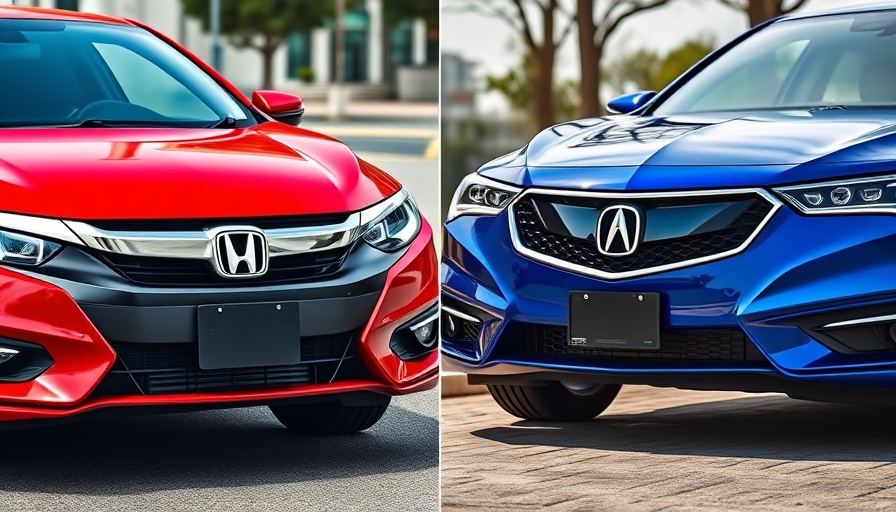
The Birth of a Luxury Brand
Established in 1986, Acura became the first luxury division of a Japanese automaker, introducing a competitive edge in a U.S. market previously dominated by European brands like BMW and Mercedes-Benz. Honda did not just birth a new brand; it created a new segment that blended reliability with luxury. This innovative strategy set Acura on a path to carve out a notable place in history, as it catered to affluent buyers looking for dependability wrapped in sophistication.
Shaping Identity: More Than Just an Expensive Honda
Acura's transition from being perceived merely as "a fancy Honda" to a distinct luxury identity has been crucial. Over the past two decades, the brand has focused on crafting unique design languages and brand recognition that resonate with luxury consumers. This evolution is emblematic of Acura's commitment to innovation, investing in its branding while ensuring that its vehicles offer a driving experience distinct from Honda's mainstream offerings.
Beyond the Showroom: Features that Define the Brands
One of the primary distinctions between Honda and Acura is the feature set. Acura vehicles consistently come equipped with advanced technology and premium materials. For example, where a Honda might use cloth seating, an Acura opts for luxurious leather, promising a more refined ambience for passengers. But it’s not just about comfort; the integration of cutting-edge car technology features is evident in Acura’s infotainment systems, providing a seamless user experience.
Understanding Costs: Ownership and Maintenance Insights
When it comes to cost, it’s evident that the premium experience comes at a price. While Honda vehicles generally have lower maintenance costs—averaging around $428 annually—Acura’s luxury service tag averages about $501. However, it is pertinent to note that many parts are interchangeable, and Acura owners benefit from service options available at any Honda dealer. This reliability in service network adds to the appeal of Acura for prospective buyers, as it blends luxury with practicality.
Safety: A Shared Commitment
Safety is another area where both brands achieve commendable results. Several models from both Honda and Acura have received top safety ratings from the Insurance Institute for Highway Safety (IIHS). This overlap underscores Honda's commitment to safety across its entire lineup, reinforcing the brand's reputation while demonstrating Acura's competitive edge in providing advanced safety technologies.
Vehicle Variety: Choices that Cater to Different Needs
Acura’s range is relatively narrow, focused primarily on sedans and SUVs, establishing its identity within a a managed scope. Honda, however, boasts a diversified repertoire that spans across hatchbacks, minivans, and crossovers, allowing for a broader range to cater to various consumer needs. This diverse offering positions Honda effectively for everyday consumers while Acura focuses on the luxury market.
Future Trajectory: The Realm of Possibilities
As we look toward the future, both Honda and Acura seem poised for innovation. Honda continues to invest in hybrid car technology and electric vehicles, looking to satisfy eco-conscious consumers. Meanwhile, Acura is likely to enhance its sports car performance analysis while maintaining reliable performance metrics, ensuring both brands remain competitive.
In Conclusion: Making Informed Choices
Choosing between Honda and Acura ultimately weighs heavily on the individual’s lifestyle and preferences. Whether prioritizing the cost-effective, practical options of Honda or the luxurious appeal of Acura with its higher-end features, consumers can confidently make informed choices based on their unique needs. Understanding these nuances can lead to better decisions, enhancing the overall vehicle ownership experience.
 Add Row
Add Row  Add
Add 




Write A Comment